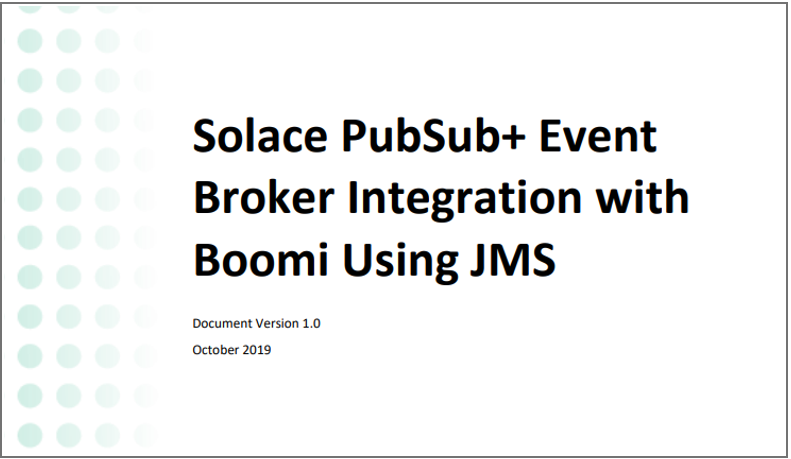Solace offers a great way to move data around, but when it comes to working with that data, you need a product like Boomi’s iPaaS to parse, transform, enrich, and route the data based on content, etc. With Solace, you can have Boomi Atoms communicate with each other across a data center, between different clouds, or between applications across the globe. I’ve just published a guide that walks you through the basics of doing so.
 In it I show a bit of the Solace PubSub+ Cloud user interface and a bit of the Boomi AtomSphere user interface. Later in the guide we use a bit of Postman to initiate a REST POST. This is not a tutorial on any of the three products — its purpose is to give you a few examples and get you up and running as quickly as possible so you can see how they work together, and from there you can explore.
In it I show a bit of the Solace PubSub+ Cloud user interface and a bit of the Boomi AtomSphere user interface. Later in the guide we use a bit of Postman to initiate a REST POST. This is not a tutorial on any of the three products — its purpose is to give you a few examples and get you up and running as quickly as possible so you can see how they work together, and from there you can explore.
Here is a high-level overview of what you will perform:
- How to get a Solace Cloud PubSub+ instance up and running
- How to get access to a Boomi instance (cloud or on prem)
- How to get them talking to one another (using JMS)
Then there are three exercises that show you how to have:
- Boomi listen to a Solace Topic
- Boomi write to a Solace Queue
- Boomi listen on a Solace Topic, parse the received data, and use that to set the publication destination back to Solace (content-based routing)
Solace and Boomi are perfect partners for distributing data and services in new hybrid and multi-cloud deployment patterns. This guide shows you how to get started. I hope you’ll check it out, and if you have any questions, share them with the Solace Community.
Explore other posts from category: For Developers

 Michael Hilmen
Michael Hilmen
